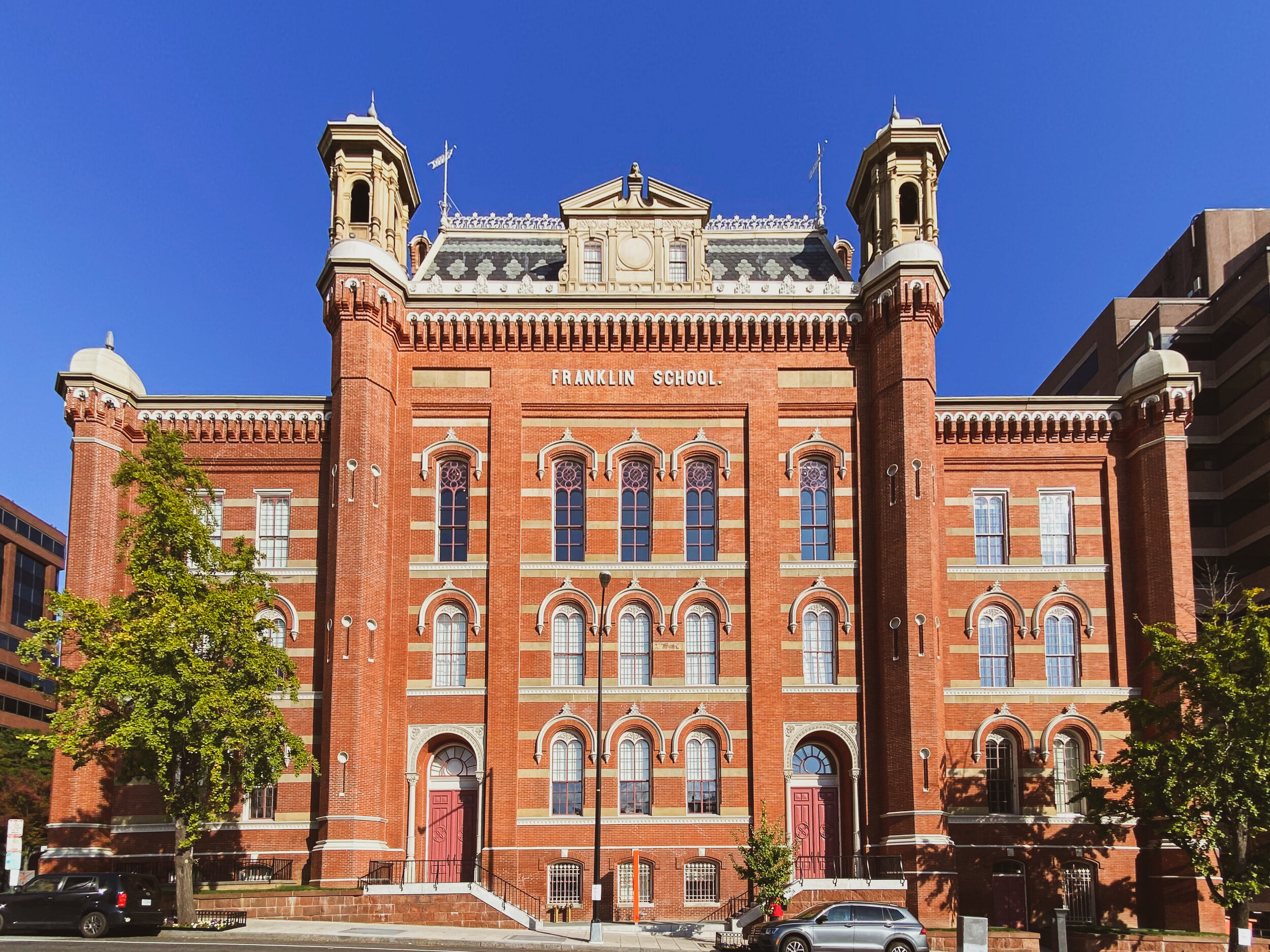For the first time since October of last year, the general public can roam the balance of the Capitol grounds freely. Most of the fences were removed this weekend. The upper platform closest to the west front steps are still closed, but 95% of the grounds that were open before the 2020 election are open as of today.
Museum Spotlight: Planet Word!
Planet Word inhabits the old Franklin School building (c. 1869) at the corner of 13th and K Streets NW.
Planet Word was, in a word, phenomenal. My expectations were fuzzy heading into this museum adventure because 1) the pandemic has altered every facet of public life, including interacting with new institutions, and 2) museums I use on tour rely heavily on the physical artifact to create a narrative, which this museum does not, for the most part.
Planet Word is offering something quite different; a learning experience based on language and demonstrating how we develop, utilize, protect (or sometimes fail to protect), and continually alter language and words.
The first sentence on their website's homepage is “The museum where language comes to life” and that is quite accurate to the experience.
Like a few other DC museums (U.S. Holocaust Memorial Museum, National Museum of African American History and Culture) you enter on floor one, but start the exhibition experience on another floor --in this case the top floor-- and wind your way down back to floor one. I should also note that at the time of this visit, attendance was restricted and all visitors were given a free-to-take-home touch pen to interact with digital touch screens (which there were many).
The top five exhibition highlights for highlights for me:
Where Do Words Come From?
Imagine a huge wall that talks to you, asks you questions, listens for your answer, and explains the root origin of dozens of English words. And imagine all this happens while it works to keep you visually engaged through moving images and word highlights. Well, it is all that and more. I loved this experience. It’s one of the first you encounter and sets the stage well for the rest of the museum by getting your mind moving, deconstructing the English language and its interconnectedness with the world's other languages.
Where Do Words Come From? exhibition.
Where Do Words Come From?
The Spoken World
It should be acknowledged that English is the language vehicle for this museum. In the Spoken World exhibition, the visitor is presented with a huge globe of the Earth surrounded by individual displays you can approach and interact with. Each individual display features a person who helps you delve into a language that is not English. For my visit, I interacted with speakers of Vietnamese, American Sign Language, Irianian Sign Language, and Russian. Each conversation offers a combination of new vocabulary, syntax, practice with simple sentences, and uncomplicated culture references. I wanted to try every language, but I also wanted to finish seeing the rest of the museum before closing. I could have stayed for hours.
This exhibition gets bonus points for a feature that fills the interactive globe in the middle of the room with images based on your own interactions with the video displays. It’s quite amusing. For those with more interest in the history of language, three large screen displays have interactive videos about topics such as disappearing languages and more; all extremely engaging topics.
Couldn’t karaoke today, but I will be back!
Joking Around exhibition.
Unlock the Music
The first exhibition I plan to rush back to after we’re free and clear of covid restrictions will be this one. Unlock the Music dives right into how musicians transform language into art; or rather, conveys exactly what it is that makes a collection of words into a song we can relate to, remember, and enjoy. All of the songs featured should be popular enough for some recognition by the average visitor. Along with the breakdown of syntax and techniques like alliteration, rhyming, and assonance, visitors get to model these techniques by… performing karaoke with the featured popular songs. While the karaoke and stage setting was fantastic, we’ll have to wait until after the pandemic to safely belt out songs in a room full of strangers without masks.
Words Matter
Reflecting on any museum visit is highly recommended. Museum experiences are dense; usually full of content, information, and new concepts. The Words Matter section is located near the end of the Planet Word experience. This space gives you a chance to reflect by completing writing prompts about how language has played a part in your own life. There are nooks at which you can take a seat and hear answers to those same questions from other people in pre-recorded talks. These videos are very personal, moving, and most importantly, relatable.
And my favorite space in the museum: The Library
In what felt like a private reading room with thousands of books floor to ceiling surrounding a reading table in the center, this was an exhibition all about the written word as literature. Books, books, books: fiction, non-fiction, graphic novels, classics, and newly released. This exhibition is truly a celebration of books. Speaking a classic line from a classic book opens up (literally opens up) dioramas with classic scenes from selected books. The long reading table features an interactive element in which you can place a book down --any book you find in the room-- and see moving image narratives about that particular book, its origins, the author, or the impact & legacy of the work itself. They’re graceful visuals and I wanted to explore every book in the room, even books I’ve already read and know inside out.
The Library exhibition.
To Kill a Mockingbird presented with commentary.
The verdict
Overall, Planet Word surprised me, in all the good ways. The Language Arts don’t belie the other disciplines. On the contrary, language makes advancement in any other discipline possible. Communication, messaging, entertainment, study, reflection; all conveyed through words.
Of all the post-pandemic museum glow ups I’m anticipating, Planet Word probably tops the list. In a world where we can’t sing aloud in groups, project when we speak, or even be near other people, it’s just harder to convey words we know, practice words we don’t, or interact with words in the ways we’re asked to at Planet Word. But now seeing what the museum actually is, I feel they have made themselves as accessible as possible considering the various (and 100% necessary) precautions in place. Whenever this pandemic ends in the U.S., I hope to revisit Planet Word to experience every feature and exhibition as they were intended. Highly recommended!
Planet Word is located at 925 13th Street NW. Admission is free, with a suggested donation of $15.
As of November 23, the museum is temporarily closed due to the pandemic. Visit the museum website for updates on opening hours and advanced reservations when they are next available.
If you enjoyed this content, consider supporting Attucks Adams on Patreon. Get weekly history posts about Washington DC including exhibition & museum reviews, photos of what’s happening across the city in real time, and much more. Subscriptions begin at just $3 and starting just this month, yearly subscribers get discounted rates. Check it out here: https://www.patreon.com/attucksadams.
The Spoken Word exhibition.
Excellent prompts for reflection in the Words Matter exhibition.
5 Outdoor Spaces to Socially Distance Right Now [Patreon Preview]
Am I making lists now?
I’m making lists now.
Here are my Top 5 outdoor places to enjoy the summer AND easily social distance from others.
1. United States Capitol Grounds
There are about 60 acres of open grounds surrounding the Capitol Building. Most of this land is open grass with light landscaping and heritage trees. Some areas, especially on the east front, are paved but open and pedestrian friendly. Benches are few and far between, but retaining walls can be used for sitting, and there are large expanses of grassy ares kept at a low height conducive for sitting or laying down on (bring a blanket!). On the east front, stake out a spot under a tree and chill out. On the west front, stop in the Summer House for a cooling off break. Open daily!
See the rest of this list on Patreon! You can support my work and get weekly DC history and culture posts through memberships starting at $3 per month.
Raymond Kaskey's American Storyboard
One of the most compelling elements of the National World War II Memorial is a series of bas-relief panels lining the north and south sides of the Memorial near 17th Street NW. DC-based sculptor Raymond Kaskey created the panels (and all other bronze sculptural elements in the memorial).
The 24 panels illustrate how World War II permeated every aspect of American life from the battlefields to living rooms, farms, and factories. They run in chronological order from east to west and are divided into the themes of Pacific front and Atlantic front, including scenes from life in the United States during the war.
Mr. Kaskey was inspired by the 1,200 foot wrap-around bas-relief frieze on the National Building Museum and used World War II era photographs housed at the National Archives to inform artwork on the panels . Here are a few close ups of these amazing depictions:


































